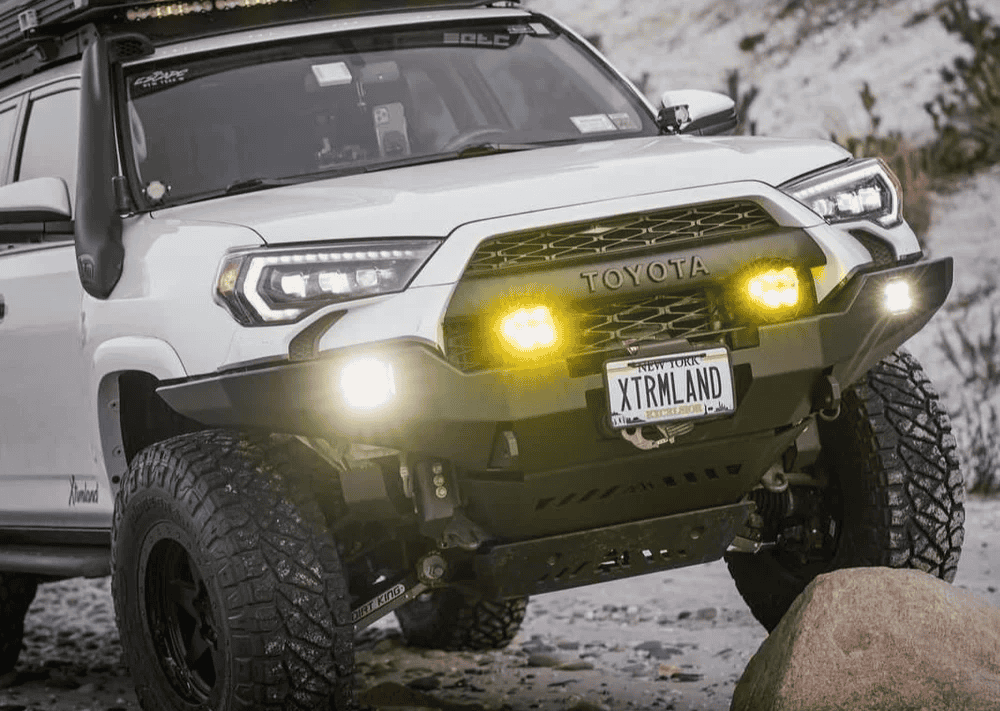Overland Vehicles

Gross Vehicle Mass is the certified maximum operating weight of a vehicle when loaded with fuel, passengers, accessories, cargo, and tow ball download. On US spec vehicles this is commonly called the gross vehicle weight rating. Exceeding that rating can lead to longer stopping distances, reduced stability, premature component wear, and potential insurance complications. A GVM upgrade service aims to increase the certified limit by engineering changes that restore safety margin when real world payload needs are higher than stock ratings.
People run into GVM constraints quickly. Add a bull bar, winch, roof rack, larger tires, drawers, water tanks, dual batteries, fridge, interior cabinetry, and recovery gear. Then load passengers and a trailer on the hitch with a meaningful tow ball weight. The scale number climbs fast. If your loaded weight is often within a few percent of the rating, you may already be functionally overweight once road gradients, crosswinds, and emergency maneuvers enter the picture.
Start at the vehicle’s door placard for the rating and curb weight, then subtract to find payload allowance. Next, weigh the vehicle in trip trim at a certified public scale. Factor axle splits, not just total, because front and rear axle ratings also apply. If the measured totals exceed an axle or are near the vehicle rating, a GVM upgrade service is worth serious consideration.
A credible upgrade is more than stiff springs. It is a system approach that restores control, braking, and durability under higher working mass. The core package usually includes new coils or leaf packs with revised spring rates, matched shock absorbers with proper valving, and bump stop tuning. On heavy vans and utes, helper springs or air assist can support variable loads, especially where the rear sees large changes from trip to daily use.
Steering and handling deserve equal attention. Higher mass shifts dynamics, so anti roll bars, link hardware, and bushings may be updated to reduce body roll and oscillation. Braking enhancements such as performance pads, larger rotors, or better cooling help maintain stopping power when descending grades. Wheels and tires must meet load index requirements, and correct speed rating remains mandatory. After installation, the vehicle should be aligned to account for new geometry and ride height.
The goal is controlled movement, not just lift. Well matched shocks keep tires planted while revised springs carry the static and dynamic load without sagging. Where chassis manufacturers specify known weak points, reinforcement plates or upgraded hardware may be used. This preserves longevity under increased duty cycles.
Additional mass means more kinetic energy. Brake performance and thermal capacity must be addressed. Steering components and tie rod ends should be inspected or upgraded to maintain precision under load and on rough surfaces, especially on long wheelbase vans and expedition trucks.
Legal compliance is critical. In many regions, GVM changes require engineering approval, documentation, and an updated compliance plate or registration record. In the US, you are dealing with the vehicle’s certified rating and federal standards. Only recognized processes and second stage manufacturers can alter those ratings for road use, so always confirm the certification path in your state. In Australia and New Zealand, GVM upgrades often fall under packages with federal or state compliance under known schemes, but the principle is the same: paperwork matters as much as parts.
The payoff shows up everywhere. The vehicle sits level under load, brakes predictably, and remains calmer on corrugated tracks and interstate crosswinds. Tire temperatures stabilize, bearings and hubs live longer, and driver fatigue drops. If towing, maintaining an appropriate balance between tow ball load, rear axle rating, and suspension support turns wandering and porpoising into a composed ride.
If your adventures include remote travel, heavy gear, and long towing days, a GVM upgrade service is a safety investment. It protects braking distance, handling margins, and the legality of your setup. For builds aimed at rugged travel, explore purpose built platforms and installation paths like Overland rigs to keep the whole system balanced. See Overland rigs for platform planning, and when you are ready for a tailored package, explore a custom overland upfit to integrate suspension, power, storage, and recovery.
Choosing the right partner matters. Look for a shop that documents weight steps, provides axle by axle data, and explains the path to road legal compliance. If you want to understand how we approach service, craftsmanship, and handoff, here is a quick primer on our process and client care at Why choose OZK.
When your rig needs more than stock capacity, we bring the engineering mindset and installation discipline to deliver a compliant, confidence inspiring result. Share your current scale ticket and travel goals, and we will map the right route from assessment to installation and on road validation.
Ready to increase payload and towing confidence the right way? Book a consult and our team will assess your current weight, design a compliant upgrade path, and install the right components for your platform. Get an engineered, road legal capacity boost with a handoff experience that sets you up for the first mile and every mile after.
ADDRESS:
6159 E Huntsville Rd, Fayetteville, AR 72701
PHONE:
(479) 326-9200
EMAIL:
info@ozkvans.com